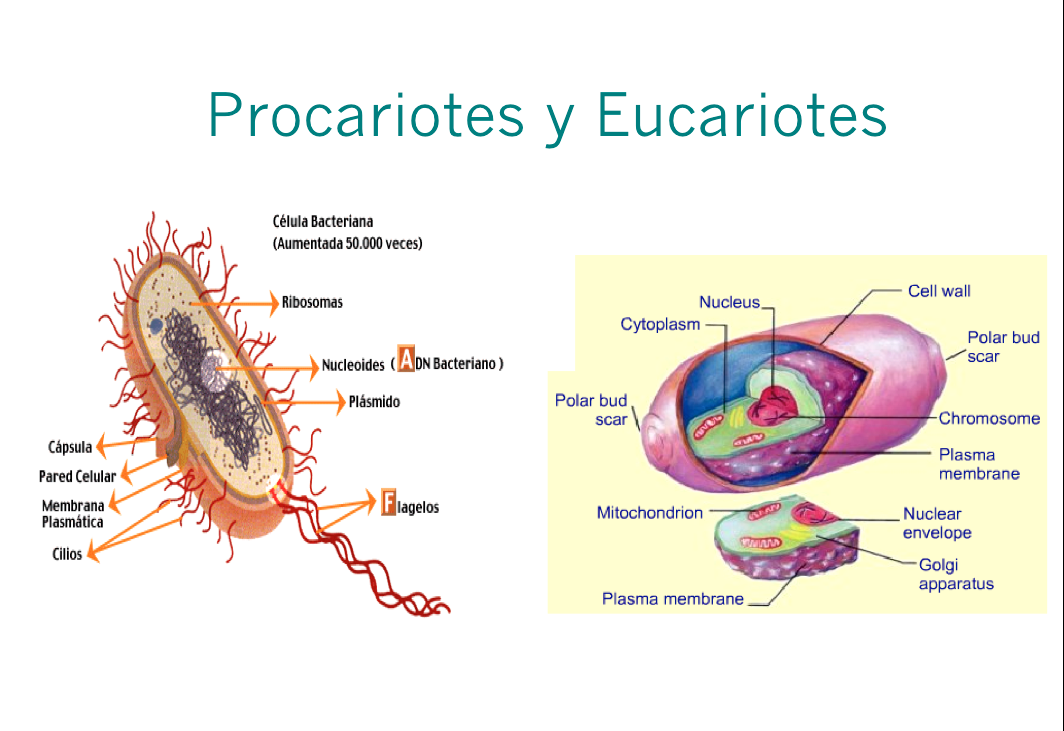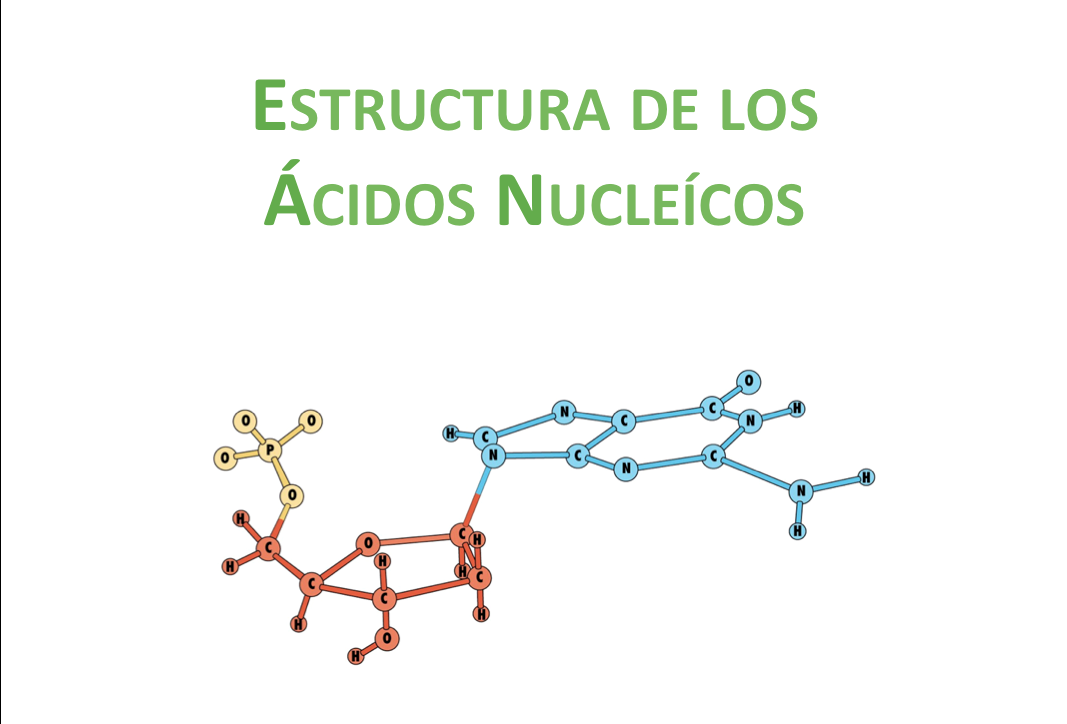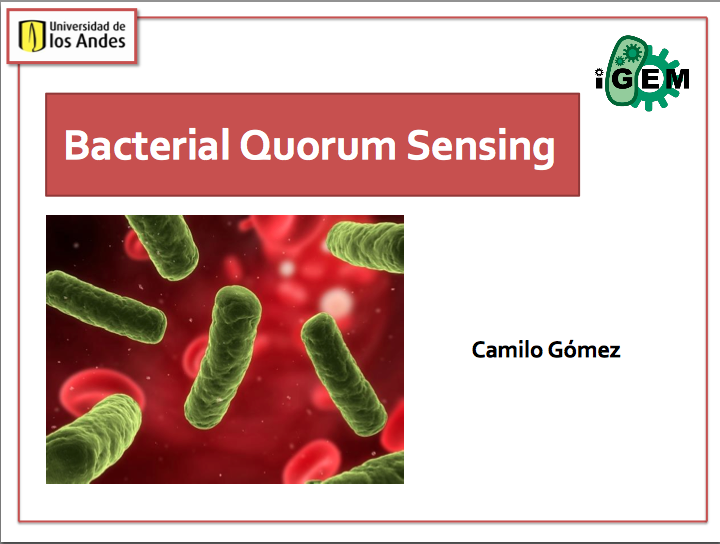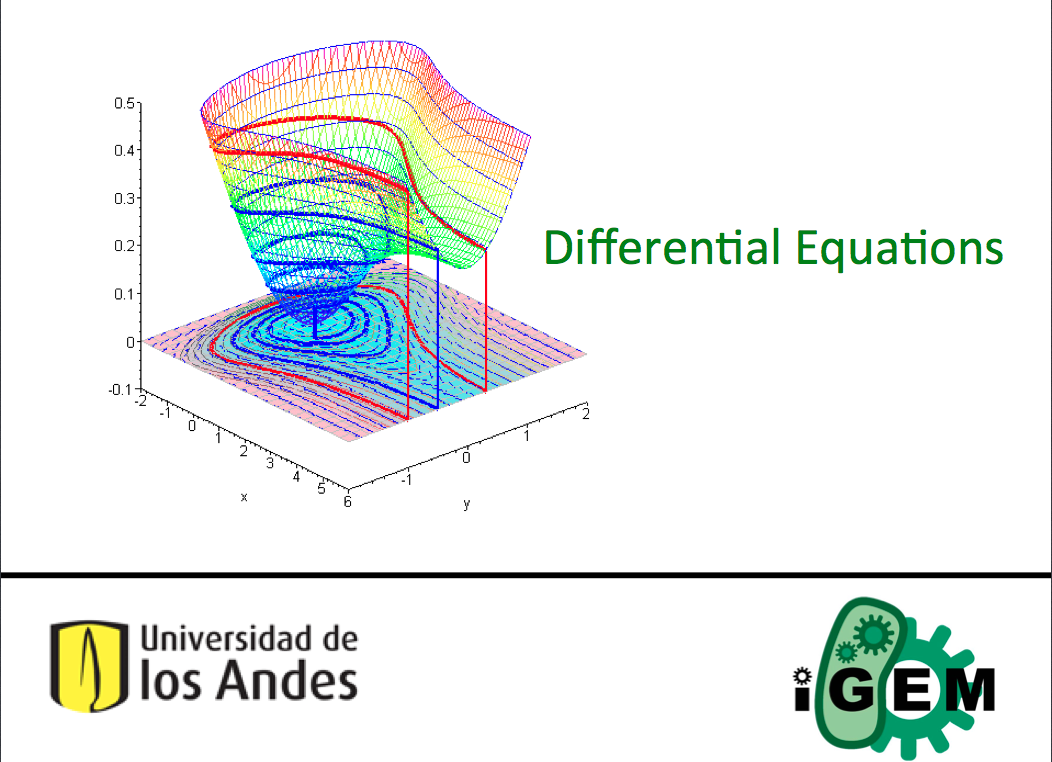|
|
| (73 intermediate revisions not shown) |
| Line 1: |
Line 1: |
| - | {{Http://2014.igem.org/Team:Colombia Uniandes/Bootstrap}} | + | {{Http://2014.igem.org/Team:Colombia}} |
| | + | |
| | + | |
| | + | <html> |
| | + | <div class="span11" style="text-align: justify;"> |
| | + | |
| | + | <center><b> <font size="24"> |
| | + | <br><br> |
| | + | Classes |
| | + | </font><br> |
| | + | <h1 class="curs1"><font size="6"> |
| | + | Sharing our knowledge |
| | + | </font></h1></b></center> |
| | + | |
| | + | <p align="justify"> |
| | + | <font size=3>Our team is made up of students from different areas of knowlegde, from design to engineering. We consider the only thing you need in order to be part of us is motivation. This is why we made a series of classes given by professors and advanced senior students where everyone can learn about everything that the project is going to be about. So our classes started as basic as cellular biology, passing through matlab, differential equations, genetic circuits and lab basics, such as restriction enzymes and PCR. Here you can check our presentations, and there is to stand out that all this training was made by students from iGEM 2012 and 2013, so they can pass all they experience to the new members of the group. |
| | + | <br><br> |
| | + | We made PopQuizzeess and All! :)</font> |
| | + | </p> |
| | | | |
| - | <html class="no-js" lang="en">
| |
| - | <script type="text/javascript">
| |
| - | $(window).load(function() {
| |
| - | $('li.pg-team_sponsors').addClass('active');
| |
| - | });
| |
| - | </script>
| |
| - | <body>
| |
| - | <div class="row">
| |
| - | <div class="ten columns offset-by-one team-bios-container">
| |
| - | <div class="row">
| |
| - | <div class="twelve columns">
| |
| - | <h2 class="centered">Sponsors</h2>
| |
| - | </div>
| |
| - | </div>
| |
| - | <div class="row" id="neb">
| |
| - | <div class="three columns">
| |
| - | <a href="http://www.neb.com/" target="_blank"> <img src="https://static.igem.org/mediawiki/2013/f/fc/TueSponsorsNEB.png" /></a>
| |
| - | </div>
| |
| - | <div class="nine columns">
| |
| - | <h3>New England Biolabs</h3>
| |
| - | Founded in the mid-1970s as a collective of scientists committed to developing innovative products for the life sciences industry, New England Biolabs is now a recognized world leader in the discovery, development and commercialization of recombinant and native enzymes for genomic research. The team is grateful for NEB sponsorship of the iGEM competition, which has provided teams with the BioBrick® Assembly Kit and other products such as DNA ladders and enzymes.
| |
| - | </div>
| |
| - | </div>
| |
| - | <div class="row" id="corning">
| |
| - | <div class="nine columns">
| |
| - | <h3>Corning Incorporated</h3>
| |
| - | Corning Incorporated is the world leader in specialty glass and ceramics. Drawing on more than 160 years of materials science and process engineering knowledge, Corning creates and makes keystone components that enable high-technology systems for consumer electronics, mobile emissions control, telecommunications and life sciences. Corning graciously supported our team through donations of laboratory supplies and has been a strong supporter of Cornell iGEM for the past four years.
| |
| - | </div>
| |
| - | <div class="three columns">
| |
| - | <a href="http://www.corning.com/index.aspx" target="_blank"> <img src="https://static.igem.org/mediawiki/2013/4/45/Corning_Logo.png" /></a>
| |
| - | </div>
| |
| - | </div>
| |
| - | <div class="row" id="gen">
| |
| - | <div class="three columns">
| |
| - | <a href="http://www.geneious.com/" target="_blank"> <img src="https://static.igem.org/mediawiki/2013/6/64/Geneious_Logo.png" /></a>
| |
| - | </div>
| |
| - | <div class="nine columns">
| |
| - | <h3>Geneious</h3>
| |
| - | Geneious is a DNA, RNA and protein sequence alignment, assembly and analysis software platform, integrating bioinformatic and molecular biology tools into a simple interface. We thank Geneious for their donated software which helped us design primers and plan our cloning.
| |
| - | </div>
| |
| - | </div>
| |
| - | <div class="row" id="snap">
| |
| - | <div class="nine columns">
| |
| - | <h3>SnapGene</h3>
| |
| - | SnapGene offers molecular biology software that offers a fast and easy way to plan, visualize, and document molecular biology procedures. The team would like to thank Snapgene for providing us with licenses that we have used to help visualize our genetic constructs.
| |
| - | </div>
| |
| - | <div class="three columns">
| |
| - | <a href="http://www.snapgene.com/" target="_blank"> <img src="https://static.igem.org/mediawiki/2013/f/f6/Cornell_snapgene.png" /></a>
| |
| - | </div>
| |
| - | </div>
| |
| - | <div class="row">
| |
| - | <div class="three columns">
| |
| - | <a href="http://us.vwr.com/" target="_blank"> <img src="https://static.igem.org/mediawiki/2013/9/97/Cornell_vwr.png" /></a>
| |
| - | </div>
| |
| - | <div class="nine columns">
| |
| - | <h3>VWR</h3>
| |
| - | VWR provides an expansive choice of premiere products, such as chemicals, furniture, equipment, instruments, apparel and consumables, to the world's top pharmaceutical, biotech, industrial, educational, governmental, and healthcare organizations. VWR has generously supported Cornell iGEM with necessary research supplies.
| |
| - | </div>
| |
| - | </div>
| |
| - | <div class="row" id="goldbio">
| |
| - | <div class="nine columns">
| |
| - | <h3>Gold Biotechnology</h3>
| |
| - | Gold Biotechnology, Inc. was founded in 1986 by Dr. Paul Gold in an effort to provide researchers with high-quality products at low prices. Gold-Bio has graciously sponsored our team by providing quality biotechnology products and chemicals.
| |
| - | </div>
| |
| - | <div class="three columns">
| |
| - | <a href="http://www.goldbio.com/" target="_blank"> <img src="https://static.igem.org/mediawiki/2013/4/45/Cornell_goldbio.png" /></a>
| |
| - | </div>
| |
| - | </div>
| |
| - | <div class="row">
| |
| - | <div class="three columns">
| |
| - | <a href="http://www.idtdna.com/site/" target="_blank"> <img src="https://static.igem.org/mediawiki/2013/0/0b/UNIK_Copenhagen_Sponsor_IDT.png" /></a>
| |
| - | </div>
| |
| - | <div class="nine columns">
| |
| - | <h3>Integrated DNA Technologies</h3>
| |
| - | Integrated DNA Technologies specializes in DNA synthesis, gene construction, antisense oligos, molecular beacons and a variety of molecular biology products. We thank IDT for being an official sponsor of the iGEM competition and providing teams with a discount on gene fragments.
| |
| - | </div>
| |
| - | </div>
| |
| - | <div class="row" id="neobiolabs">
| |
| - | <div class="nine columns">
| |
| - | <h3>NeoBioLab</h3>
| |
| - | Located in Cambridge, MA, NeoBioLab is a dedicated biology service provider and partner, providing innovative solutions to molecular and cellular biology, in vivo experiments, and drug screening services. We thank NeoBioLabs for supporting our research.
| |
| - | </div>
| |
| - | <div class="three columns">
| |
| - | <a href="http://www.neobiolab.com/" target="_blank"> <img src="https://static.igem.org/mediawiki/2013/c/c6/Cornell_neobiolab.png" /></a>
| |
| - | </div>
| |
| - | </div>
| |
| - | <div class="row" id="mathworks">
| |
| - | <div class="three columns">
| |
| - | <a href="http://www.mathworks.com/" target="_blank"> <img src="https://static.igem.org/mediawiki/2013/f/f4/Cornell_mathworks.png" /></a>
| |
| - | </div>
| |
| - | <div class="nine columns">
| |
| - | <h3>MathWorks</h3>
| |
| - | MathWorks is the world's leading developer of technical computing software for engineers and scientists in industry, government, and education. The team thanks MathWorks for sponsoring the 2013 iGEM competition, providing software and technical support to all iGEM teams.
| |
| - | </div>
| |
| - | </div>
| |
| - | <div class="row">
| |
| - | <div class="nine columns">
| |
| - | <h3>Dan Simpkins of Hillcrest Labs</h3>
| |
| - | Hillcrest Labs is the leading global supplier of software and hardware for motion- enabled products. The team would like to thank Dan Simpkins, CEO of Hillcrest Labs, for sharing his entrepreneurial vision and supporting our team for the past few years.
| |
| - | </div>
| |
| - | <div class="three columns">
| |
| - | <a href="http://hillcrestlabs.com/" target="_blank"> <img src="https://static.igem.org/mediawiki/2013/b/b4/Cornell_hillcrestlabs.png" /></a>
| |
| - | </div>
| |
| - | </div>
| |
| - | <div class="row">
| |
| - | <div class="three columns">
| |
| - | <a href="http://www.nanocs.com/" target="_blank"><img src="https://static.igem.org/mediawiki/2013/3/3f/Cornell_nanocs.png" /></a>
| |
| - | </div>
| |
| - | <div class="nine columns">
| |
| - | <h3>Nanocs Inc.</h3>
| |
| - | Nanocs Inc. is a leading biochemical reagent provider in life science research, with products such as PEG derivatives, nanoparticles and beads, and labels and crosslinkers. The team thanks Nanocs for supporting our research.
| |
| - | </div>
| |
| - | </div>
| |
| - | <div class="row">
| |
| - | <div class="nine columns">
| |
| - | <h3>Growth Curves USA</h3>
| |
| - | Bioscreen-C Automated Growth Curve Analysis System provides a tightly controlled environment for measurement of growth of bacteria, molds, yeasts, or spores. The team thanks Growth Curves USA for supporting our project.
| |
| - | </div>
| |
| - | <div class="three columns">
| |
| - | <a href="http://www.growthcurvesusa.com/" target="_blank"><img src="https://static.igem.org/mediawiki/2013/c/c6/Cornell_growthcurvesusa.gif" /></a>
| |
| - | </div>
| |
| - | </div>
| |
| - | <div class="row">
| |
| - | <div class="three columns">
| |
| - | <a target="_blank" href="http://biossusa.com/store/"><img src="https://static.igem.org/mediawiki/2013/8/84/Cornell_bioss_logo.jpg" /></a>
| |
| - | </div>
| |
| - | <div class="nine columns">
| |
| - | <h3>Bioss Inc.</h3>
| |
| - | Bioss Inc. is dedicated to developing and manufacturing top quality antibodies that accelerate biological research and discovery. They have developed over 10,000 primary antibodies and more than 150,000 derived products including fluorochrome and enzyme conjugated antibodies to facilitate a range of research aims. Bioss is located in the greater Boston area; one of the world’s thriving biotech communities. The team thanks Bioss for supporting our project this year.
| |
| - | </div>
| |
| - | </div>
| |
| - | <div class="row">
| |
| - | <div class="nine columns">
| |
| - | <h3>Cornell David A. Atkinson Center for a Sustainable Future</h3>
| |
| - | Created in 2006 by the Office of the Provost, the Atkinson Center for a Sustainable Future (ACSF) advances multidisciplinary research and cultivates innovative collaborations within and beyond Cornell to foster a sustainable future for all. ACSF has graciously supported our team’s work on biomaterials development.
| |
| - | </div>
| |
| - | <div class="three columns">
| |
| - | <a href="http://www.sustainablefuture.cornell.edu/index.php" target="_blank"><img src="https://static.igem.org/mediawiki/2013/3/31/CU_Logo.png" /></a>
| |
| - | </div>
| |
| - | </div>
| |
| - | <div class="row" id="cornell">
| |
| - | <div class="three columns">
| |
| - | <a href="http://www.engineering.cornell.edu/" target="_blank"> <img src="https://static.igem.org/mediawiki/2013/3/31/CU_Logo.png" /></a>
| |
| - | </div>
| |
| - | <div class="nine columns">
| |
| - | <h3>Cornell University</h3>
| |
| - | We would like to thank the Cornell College of Engineering for providing material, monetary, and other resources to the team. The Departments of Biological & Environmental Engineering, Chemical & Biomolecular Engineering, and Electrical & Computer Engineering have all provided resources and advice to the team.
| |
| - | </div>
| |
| - | </div>
| |
| - | <div class="row">
| |
| - | <div class="nine columns">
| |
| - | <h3>Cornell Institute for Biotechnology & Life Sciences Technology</h3>
| |
| - | The mission of Cornell’s Biotech Institute is to promote research, education and technology transfer for applications of biotechnology for the benefit of the environment, agriculture, engineering and veterinary and human medicine. We would like to thank the institute for their monetary support to the team for the purchasing of laboratory supplies and equipment.
| |
| - | </div>
| |
| - | <div class="three columns">
| |
| - | <a href="http://www.biotech.cornell.edu" target="_blank"> <img src="https://static.igem.org/mediawiki/2013/3/31/CU_Logo.png" /></a>
| |
| - | </div>
| |
| - | </div>
| |
| - | <div class="row">
| |
| - | <div class="three columns">
| |
| - | <a href="http://www.icmb.cornell.edu" target="_blank"> <img src="https://static.igem.org/mediawiki/2013/3/31/CU_Logo.png" /></a>
| |
| - | </div>
| |
| - | <div class="nine columns">
| |
| - | <h3>Weill Institute</h3>
| |
| - | The Weill Institute for Cell and Molecular Biology, is an interdisciplinary research institute in the heart of Cornell University's Ithaca, NY campus focusing on cell signaling and molecular dynamics. Weill Hall is home to the Cornell iGEM lab, space which was graciously donated to us through Professor Shivaun Archer also in Weill Hall. The Weill Institute also provided the team with monetary support for purchasing laboratory supplies and access to equipment.
| |
| - | </div>
| |
| - | </div>
| |
| - | <div class="row">
| |
| - | <div class="nine columns">
| |
| - | <h3>Cornell Office of Academic Diversity Initiatives</h3>
| |
| - | Ezra Cornell's revolutionary commitment to "any person... in any study" inspires OADI to cultivate the extraordinary presence of so many talented individuals in so many ground-breaking intellectual, artistic, and technical pursuits in order that every person in every study experiences the full diversity of dynamic and stimulating exchange with each other.
| |
| - | </div>
| |
| - | <div class="three columns">
| |
| - | <a href="http://www.icmb.cornell.edu" target="_blank"> <img src="https://static.igem.org/mediawiki/2013/3/31/CU_Logo.png" /></a>
| |
| - | </div>
| |
| - | </div>
| |
| - | <div class="row last-ele">
| |
| - | <div class="twelve columns center">
| |
| | <br> | | <br> |
| - | <h5>The team would also like to thank all of our sponsors on Microryza, our crowdfunding platform - your donations have helped us realize our project goals. </h5>
| + | <font color="#8A0808" size="5" >Basic Biology</font> |
| - | </div>
| + | <br> |
| - | </div>
| + | </html> |
| - | </div>
| + | [[File:Col_Biology.pdf|left]] |
| - | </div>
| + | [[File:Col_Biology.jpg|left|300 px]] |
| | + | <br> |
| | + | <br> |
| | + | <html><p> |
| | + | <font size="3" >We have students from engineering backgrounds who have not study biology. With this class we started by the basic differences between procaryotes and eucaryotes and learnt all the cell biology required to understand systems biology processes, . </font> |
| | + | </p> |
| | + | |
| | + | <br> |
| | + | <br> |
| | + | <br> |
| | + | <br> |
| | + | <br><br><br> |
| | + | <font color="#8A0808" size="5" >Molecular Biology</font> |
| | + | <br> |
| | + | </html> |
| | + | [[File:Col_MolBol.pdf|left]] |
| | + | [[File:Col_MOlBiol.jpg|left|300 px]] |
| | + | <br> |
| | + | <br> |
| | + | <html><p> |
| | + | <font size="3" >Once the biology basics were stablished we continue to learn molecular biology. We learn about DNA structure and manipulation. We understood deeply PCR and Restriction enzymes</font> |
| | + | </p> |
| | + | <br> |
| | + | <br> |
| | + | <br> |
| | + | <br> |
| | + | <br><br> |
| | + | <font color="#8A0808" size="5" >Quorum Sensing</font> |
| | + | <br> |
| | + | </html> |
| | + | [[File:Quorum Sensing.pdf|left]] |
| | + | [[File:Quorum Sensing.jpg|left|300 px]] |
| | + | <br> |
| | + | <br> |
| | + | <html><p> |
| | + | <font size="3" >With this class we learnt the basic topics in bacterial quorum sensing and how they talk to each other. For instance the concepts about AHL, Lux-like genes and the effect of population density were examined. In addition we saw some applications of bacterial quorum sensing in genetic constructs, illustrating this with well known examples of bacterial signaling in synthetic biology.</font> |
| | + | </p> |
| | + | |
| | + | <br> |
| | + | <br> |
| | + | <br> |
| | + | <br> |
| | + | <br> |
| | + | <br> |
| | + | <font color="#8A0808" size="5" >Differential equations</font> |
| | + | <br> |
| | + | </html> |
| | + | [[File:Differential Equations.pdf|left]] |
| | + | [[File:Differential Equations.jpg|left|300 px]] |
| | + | <br> |
| | + | <br> |
| | + | <html><p> |
| | + | <font size="3" >For those of us who did not have a mathematical background we made this class to understand what a differential equation is. We learnt how to made equations from biological processes and that there were two ways to find their solutions: Analytically and Numerically</font> |
| | + | </p> |
| | + | |
| | + | <br> |
| | + | <br> |
| | + | <br> |
| | + | <br> |
| | + | <br> |
| | + | <br> |
| | + | <font color="#8A0808" size="5" >Mathematical models</font> |
| | + | <br> |
| | + | </html> |
| | + | [[File:Mathematical Models.pdf|left]] |
| | + | [[File:MathModels.jpg|left|300 px]] |
| | + | <br> |
| | + | <br> |
| | + | <html><p> |
| | + | <font size="3" >One of the main sections of iGEM are mathematical models, with this class we learnt how they are made. Concepts like the law of mass action and the mass conservation principle were discussed in order to understand the Michaelis Menten and the Hill's expression demonstrations. We studied a way to find the parameters for the model developed by the </html> [https://2012.igem.org/Team:Colombia/Modeling/Paramterers Team in 2012]<html> </font> |
| | + | </p> |
| | + | <br> |
| | + | <br> |
| | + | <br> |
| | + | <br> |
| | + | |
| | + | <center> |
| | + | <div class="button-fill orange" ><div class="button-text">Back Notebook</div><div class="button-inside"><div class="inside-text"><a style="text-decoration: none; background-color: none; color: red;" href="https://2014.igem.org/Team:Colombia/Notebook">Go! </a></div></div></div> |
| | + | </center> |
| | + | |
| | + | <br><br><br><br><br><br> |
| | + | </div> |
| | + | |
| | + | <script> |
| | + | $(".button-fill").hover(function () { |
| | + | $(this).children(".button-inside").addClass('full'); |
| | + | }, function() { |
| | + | $(this).children(".button-inside").removeClass('full'); |
| | + | }); |
| | + | //@ sourceURL=pen.js |
| | + | </script> |
Classes
Sharing our knowledge
Our team is made up of students from different areas of knowlegde, from design to engineering. We consider the only thing you need in order to be part of us is motivation. This is why we made a series of classes given by professors and advanced senior students where everyone can learn about everything that the project is going to be about. So our classes started as basic as cellular biology, passing through matlab, differential equations, genetic circuits and lab basics, such as restriction enzymes and PCR. Here you can check our presentations, and there is to stand out that all this training was made by students from iGEM 2012 and 2013, so they can pass all they experience to the new members of the group.
We made PopQuizzeess and All! :)
Basic Biology
File:Col Biology.pdf
We have students from engineering backgrounds who have not study biology. With this class we started by the basic differences between procaryotes and eucaryotes and learnt all the cell biology required to understand systems biology processes, .
Molecular Biology
File:Col MolBol.pdf
Once the biology basics were stablished we continue to learn molecular biology. We learn about DNA structure and manipulation. We understood deeply PCR and Restriction enzymes
Quorum Sensing
File:Quorum Sensing.pdf
With this class we learnt the basic topics in bacterial quorum sensing and how they talk to each other. For instance the concepts about AHL, Lux-like genes and the effect of population density were examined. In addition we saw some applications of bacterial quorum sensing in genetic constructs, illustrating this with well known examples of bacterial signaling in synthetic biology.
Differential equations
File:Differential Equations.pdf
For those of us who did not have a mathematical background we made this class to understand what a differential equation is. We learnt how to made equations from biological processes and that there were two ways to find their solutions: Analytically and Numerically
Mathematical models
File:Mathematical Models.pdf
One of the main sections of iGEM are mathematical models, with this class we learnt how they are made. Concepts like the law of mass action and the mass conservation principle were discussed in order to understand the Michaelis Menten and the Hill's expression demonstrations. We studied a way to find the parameters for the model developed by the Team in 2012
 "
"










